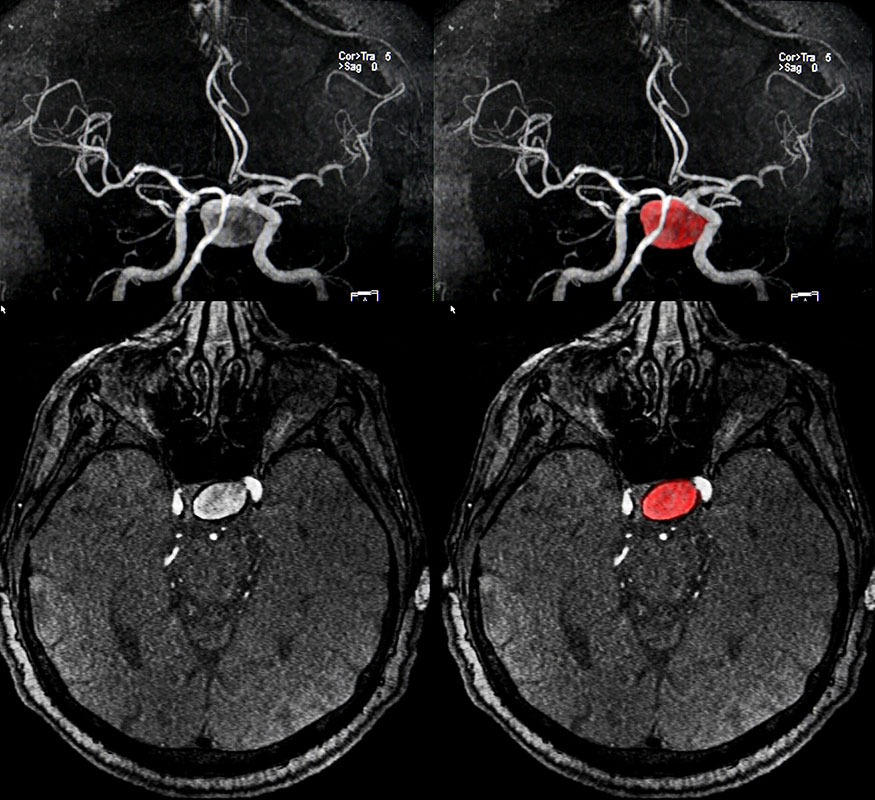A new minimally invasive procedure has emerged as a safe way to treat certain brain aneurysms, and UConn Health’s Division of Neurosurgery is among its earliest adopters.
The latest advancement, based on a stent that’s been in use for a decade, is known as the Neuroform Atlas.
“It’s a microstent,” says Dr. Ketan Bulsara, chief of UConn Health’s Division of Neurosurgery. “Sometimes the anatomy may prevent the navigation of a larger stent into the appropriate target area. The advantage of the microstent is, given its small size and smaller equipment requirements, we may be able to get into areas that we couldn’t normally navigate because it’s too difficult to get into those areas with larger-caliber stents.”

That ability further broadens the range of lesion types that can be treated through minimally invasive means. Most patients who undergo this procedure can be ready to go home the following day.
An aneurysm occurs when part of an artery’s wall weakens and causes it to bulge. It usually is asymptomatic, but in some cases, it can rupture and cause life-threatening internal bleeding. When this occurs in blood vessels leading to the brain, it leads to hemorrhagic stroke, which requires emergency care.
Once an aneurysm is detected, it is important to get an assessment for its risk of rupture as soon as possible. Bulsara says about a third of patients who suffer a ruptured brain aneurysm die, and another third who make it to the hospital don’t fully recover and are never the same.
“We’re in a time right now where the technological advancements are being made so rapidly in terms of these devices and microsurgical techniques that it’s imperative, to maintain the best possible outcome for all of our patients, that we offer the latest, newest technologies that have been deemed safe,” Bulsara says. “Our use of this stent is another testament to that. It continues to add to our treatment armamentarium and increases the number of diseases we can treat safely.”
Connecticut’s only neurosurgeon with dedicated post-residency dual fellowship training in skull base cerebrovascular microneurosurgery and endovascular neurosurgery, Bulsara leads a division that’s equipped with the experience, imaging modalities, and microsurgical and endovascular tools to treat the full spectrum of issues.
“This is done in a multidisciplinary collaborative fashion, with the primary aim to optimize patient care by tailoring the treatment specifically to the patient’s pathology,” Bulsara says.
Bulsara completed the first Neuroform Atlas stent placement in the new biplane hybrid operating room on April 11. It was one of the 20 cases done by UConn Health neurosurgeons in the hybrid OR within the first month of its opening.



